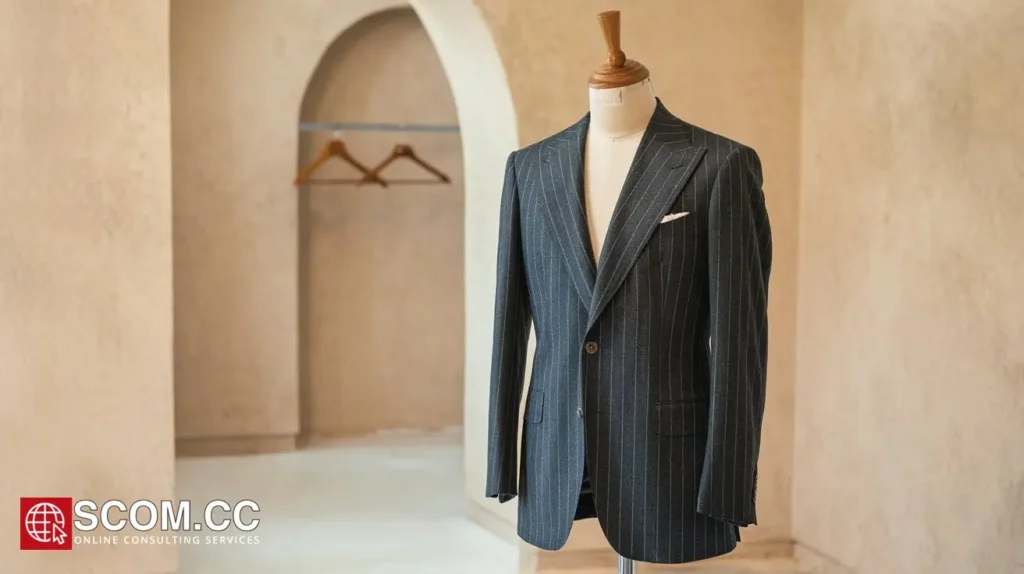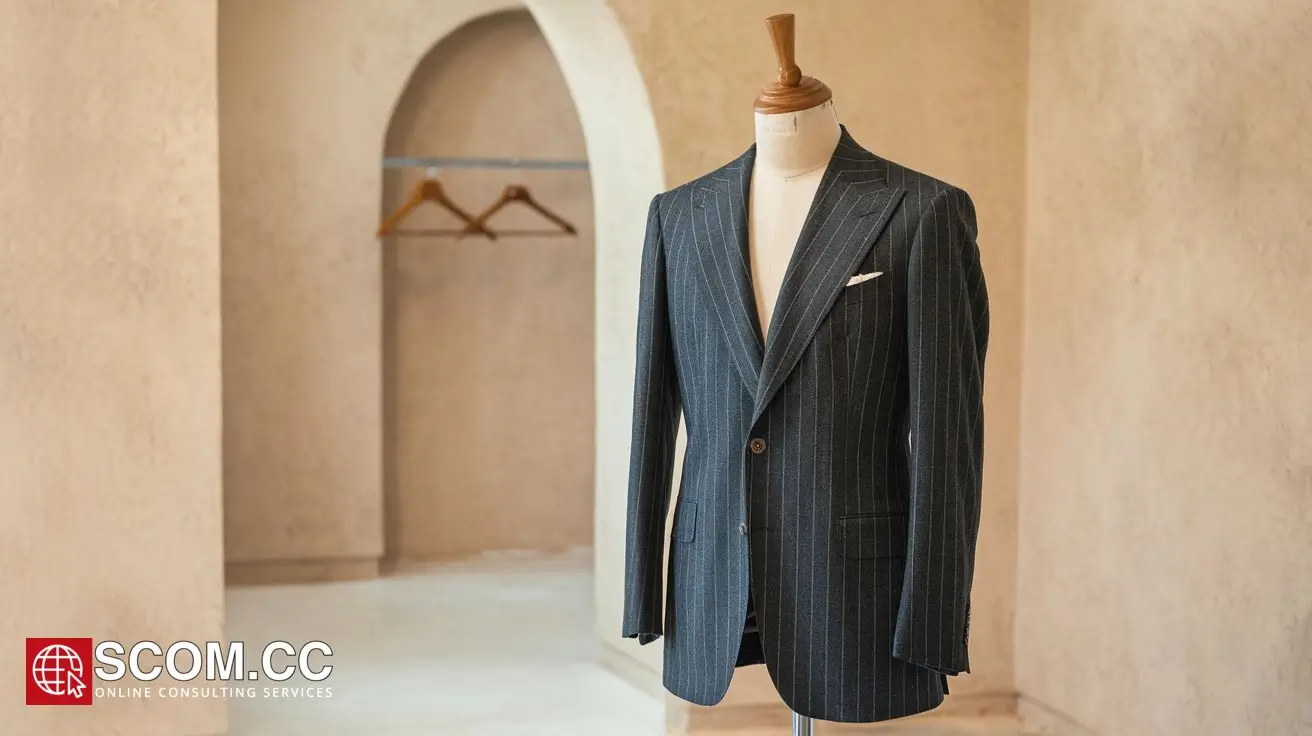Selecting the Right Suit for Different Seasons

- Selecting the Right Suit for Different Seasons
- Spring Suits: Embrace Lightness and Freshness
- Summer Suits: Stay Cool and Comfortable
- Autumn Suits: Layer and Embrace Rich Textures
- Winter Suits: Maximize Warmth and Elegance
- Additional Tips for Year-Round Suit Maintenance
- Seasonal Suit Trends and Innovations
- Conclusion
-
FAQ
- 1. What fabric is best for a spring suit?
- 2. Can I wear a linen suit in the summer?
- 3. What colors are suitable for autumn suits?
- 4. How should I care for a wool suit during winter?
- 5. What style of suit is best for summer?
- 6. How do I choose a suit color for formal winter events?
- 7. Are there any specific trends for suits in autumn?
Selecting the Right Suit for Different Seasons
Choosing the right suit for each season involves more than just picking the right color or pattern. The fabric, fit, and construction of your suit should align with the weather conditions to ensure comfort and style throughout the year. Here, we explore how to select the perfect suit for each season, focusing on fabric types, suit styles, and practical tips to help you maintain your polished look all year round.
Spring Suits: Embrace Lightness and Freshness
As temperatures rise and nature begins to bloom, spring calls for suits that are both lightweight and breathable. Here’s what to consider:
Fabric Choices
- Wool Blends: Lightweight wool blends offer the perfect balance between breathability and structure. Opt for a blend that includes silk or linen for added lightness.
- Cotton: Cotton suits are ideal for spring, providing excellent breathability and comfort. A lighter weight cotton fabric ensures you stay cool during warmer days.
- Linen: For exceptionally warm spring days, linen is a superb choice due to its natural breathability. However, be prepared for its tendency to wrinkle.
Colors and Patterns
- Colors: Embrace lighter and fresher colors such as light grey, beige, or pastel shades. These colors reflect the vibrant and rejuvenating spirit of spring.
- Patterns: Subtle patterns such as checks or pinstripes can add a touch of sophistication without overwhelming the lightness of spring.
Suit Styles
- Single-Breasted Jackets: The classic single-breasted jacket offers a lighter and less formal look, making it perfect for spring's casual events.
- Unlined Jackets: Consider unlined or half-lined jackets to enhance breathability and comfort during the warmer months.
Summer Suits: Stay Cool and Comfortable
Summer suits must tackle the heat while ensuring you look sharp. Here’s how to stay stylish and comfortable:
Fabric Choices
- Lightweight Wool: Lightweight wool suits are breathable and wick away moisture, making them a versatile choice for summer.
- Linen: Linen is a top choice for summer due to its excellent breathability and moisture-wicking properties. Choose 100% linen for maximum comfort.
- Cotton: Cotton suits are also suitable for summer, especially when made from lightweight, airy fabrics.
Colors and Patterns
- Colors: Stick with cool, light colors like light blue, white, or taupe. These shades reflect sunlight and help keep you cooler.
- Patterns: Summer suits can handle bolder patterns like gingham or large checks. These patterns add a touch of fun and personality while maintaining a lighthearted feel.
Suit Styles
- Two-Piece Suits: Opt for two-piece suits to stay cooler. They offer simplicity and ease without sacrificing style.
- Unstructured Blazers: Unstructured blazers provide a relaxed fit and increased ventilation, making them ideal for summer wear.
Autumn Suits: Layer and Embrace Rich Textures
As the weather turns cooler, autumn suits should reflect the changing colors and offer warmth and sophistication. Here’s how to adapt:
Fabric Choices
- Wool: Medium to heavyweight wool is perfect for autumn, providing warmth without excessive bulk. Consider tweed or flannel for added texture.
- Wool Blends: Wool blends with cashmere or alpaca offer extra warmth and a luxurious feel, suitable for the cooler autumn days.
Colors and Patterns
- Colors: Embrace earthy tones such as brown, olive, or burgundy. These colors complement the autumn landscape and provide a rich, warm look.
- Patterns: Plaids and checks are popular in autumn suits. They add visual interest and a seasonal touch to your ensemble.
Suit Styles
- Layering: Autumn suits often benefit from layering. Consider adding a vest or wearing a sweater under your jacket for extra warmth.
- Double-Breasted Jackets: Double-breasted jackets offer additional warmth and a classic look, making them suitable for cooler weather.
Winter Suits: Maximize Warmth and Elegance
Winter requires suits that provide both warmth and sophistication. Here’s how to stay stylish in colder temperatures:
Fabric Choices
- Heavyweight Wool: Heavyweight wool is ideal for winter, offering excellent insulation and durability. Opt for wool flannel or tweed for added warmth.
- Cashmere Blends: Cashmere blends add a luxurious touch and exceptional warmth, perfect for formal winter events.
Colors and Patterns
- Colors: Choose dark, rich colors such as charcoal grey, navy, or deep green. These colors are practical for winter and provide a refined look.
- Patterns: Subtle patterns like houndstooth or pinstripes can add elegance without being too bold.
Suit Styles
- Three-Piece Suits: Three-piece suits, including a vest, provide extra warmth and a sophisticated appearance for winter.
- Overcoats: Complement your suit with a well-fitted overcoat. Wool or cashmere overcoats offer additional protection from the cold.
Additional Tips for Year-Round Suit Maintenance
To ensure your suits remain in top condition regardless of the season, follow these essential maintenance tips:
Proper Storage
- Seasonal Rotation: Store your suits appropriately based on the season. Rotate your wardrobe to ensure that seasonal suits are not exposed to prolonged periods of wear. Use breathable garment bags to protect your suits from dust and light.
- Hangers: Invest in high-quality, wooden suit hangers to maintain the shape of your jackets. Avoid using wire hangers, as they can distort the fabric and shoulders of the suit.
- Suit Bags: For long-term storage, use suit bags that allow the fabric to breathe. Avoid plastic bags as they can trap moisture and lead to mildew.
Regular Cleaning and Care
- Spot Cleaning: Address spills or stains promptly with spot cleaning to avoid permanent damage. Use a clean cloth and mild cleaning solution tailored for the suit fabric.
- Professional Cleaning: Schedule regular dry cleaning for your suits, but don’t overdo it. Excessive dry cleaning can weaken the fabric and affect its longevity.
- Steaming: Use a steamer to freshen up your suit and remove wrinkles. This method is gentler on the fabric compared to ironing and helps preserve the suit’s texture and shape.
Repair and Alteration
- Timely Repairs: Address any issues with your suit immediately. Loose buttons, frayed seams, or small tears should be repaired promptly to prevent further damage.
- Tailoring: Regularly assess the fit of your suits and visit a tailor for any necessary adjustments. A well-fitted suit enhances your appearance and ensures comfort.
Fabric-Specific Care
- Wool Suits: For wool suits, use a fabric brush to remove dirt and lint. Store them in a well-ventilated area to avoid moth damage. Consider using moth repellent sachets in your closet.
- Linen Suits: Linen suits may require frequent pressing to maintain their crisp appearance. Be mindful of its tendency to wrinkle and consider a wrinkle-resistant spray.
- Cotton Suits: Cotton suits should be cleaned more frequently due to their tendency to absorb sweat and stains. Wash according to the care label and consider a fabric conditioner for added softness.
Seasonal Suit Trends and Innovations
Staying updated with the latest trends and innovations in suit fashion can help you make informed choices:
Spring and Summer Trends
- Lightweight Fabrics: Innovations in fabric technology have led to the development of advanced lightweight and breathable materials that offer enhanced comfort during warm weather.
- Bright Colors: Spring and summer trends often feature vibrant colors and unique patterns, reflecting a more casual and relaxed style. Experiment with colors like mint green, coral, or sky blue.
Autumn and Winter Trends
- Layering Techniques: Autumn and winter fashion emphasizes layering for both style and warmth. Incorporate turtlenecks or cardigans under your suit jacket for a sophisticated look.
- Textured Fabrics: Look for textured fabrics such as corduroy or tweed that add depth and interest to your winter wardrobe. These materials not only provide warmth but also enhance the overall aesthetic of your suit.
Sustainable Fashion
- Eco-Friendly Fabrics: Consider suits made from sustainable materials such as organic wool or recycled fibers. These options are environmentally friendly and align with the growing trend toward ethical fashion.
- Durability and Longevity: Investing in high-quality, durable suits reduces the need for frequent replacements. Focus on well-constructed pieces that offer timeless style and long-term value.
Conclusion
Selecting the right suit for different seasons involves more than just choosing the appropriate fabric and style. It requires a comprehensive understanding of seasonal needs, fabric care, and current trends. By following the guidelines outlined above, you can ensure that your suits not only look impeccable throughout the year but also offer comfort and durability.
Remember to adapt your wardrobe to the changing seasons, maintain your suits with proper care, and stay updated with the latest fashion trends. A well-chosen and maintained suit is a valuable investment in your professional and personal wardrobe.
Selecting the right suit for each season involves a thoughtful choice of fabrics, colors, and styles to ensure both comfort and elegance. By understanding the seasonal requirements and making informed decisions, you can maintain a polished appearance year-round. Whether it’s a lightweight cotton suit for summer or a heavyweight wool suit for winter, the right suit enhances your style and adapts to the weather.
Summary Table: Selecting the Right Suit for Different Seasons
| Season | Fabric Choices | Colors and Patterns | Suit Styles |
|---|---|---|---|
| Spring | Lightweight wool blends, cotton, linen | Light grey, beige, pastel shades | Single-breasted, unlined jackets |
| Summer | Lightweight wool, linen, cotton | Light blue, white, taupe | Two-piece suits, unstructured blazers |
| Autumn | Medium to heavyweight wool, wool blends | Brown, olive, burgundy | Layering options, double-breasted jackets |
| Winter | Heavyweight wool, cashmere blends | Charcoal grey, navy, deep green | Three-piece suits, wool overcoats |
FAQ
1. What fabric is best for a spring suit?
For spring, lightweight wool blends, cotton, and linen are ideal. These fabrics are breathable and comfortable for the mild weather of spring.
2. Can I wear a linen suit in the summer?
Yes, linen is an excellent choice for summer due to its natural breathability and moisture-wicking properties, although it does tend to wrinkle easily.
3. What colors are suitable for autumn suits?
In autumn, opt for earthy tones such as brown, olive, and burgundy. These colors complement the season’s changing foliage and provide a warm, sophisticated look.
4. How should I care for a wool suit during winter?
For winter, regularly dry clean your wool suit, use a fabric brush to remove dirt, and store it in a breathable garment bag. Avoid excessive dry cleaning to prevent weakening the fabric.
5. What style of suit is best for summer?
A two-piece suit with an unstructured blazer is best for summer. It offers comfort and breathability while maintaining a stylish appearance.
6. How do I choose a suit color for formal winter events?
For formal winter events, choose dark, rich colors such as charcoal grey, navy, or deep green. These colors provide a sophisticated and elegant look suitable for colder weather.
7. Are there any specific trends for suits in autumn?
Autumn trends often feature textured fabrics such as corduroy or tweed and emphasize layering techniques, including vests or cardigans for added warmth and style.

To explore more about tailoring, visit our Blog of Tailoring. If you have any questions or need assistance, go to our contact page. Additionally, you can find more information about tailoring and consulting at this tailoring and consulting portal.

Leave a Reply